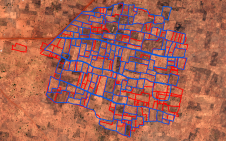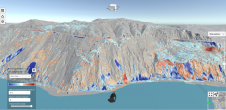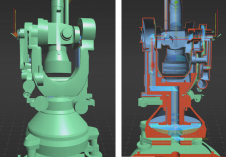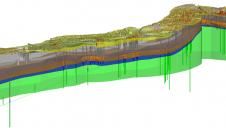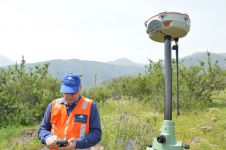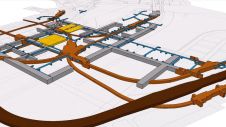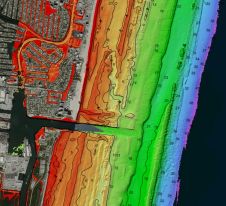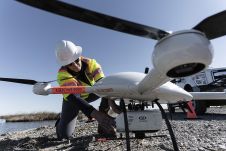The Rail BIM 2030 Roadmap Project
The Rail BIM 2030 Roadmap has been developed collaboratively by the Korea Railroad Research Institute, Yonsei University and the Korea Rail Network Authority. It explains the five phases of building information modelling (BIM) adoption and diffusion strategies from 2018 to 2030 for the advancement of the South Korean railway industry in the 4thIndustrial Age (‘Industry 4.0’). We asked Professor Ghang Lee, director of the Building Informatics Group (BIG) at the Department of Architecture and Architectural Engineering at Yonsei University in Seoul, South Korea, five questions in order to find out more about this project.
Can you please briefly explain the background to the Rail BIM 2030 Roadmap?
The Korea Rail Network Authority (KR) is a government agency that oversees and manages the entire railway lifecycle, including the high-speed, conventional and urban rail infrastructures. Considering that the first large public BIM project in South Korea was organized in 2008, KR adopted BIM relatively early; KR conducted its first BIM project in 2009 and a further eight before 2018. Nevertheless, not many people within KR knew about these BIM projects because they were conducted at project level rather than company level. The knowledge and experience gained through the projects vaporized because they were done in an uncoordinated manner without a good roadmap and strategies.

What is the current status of the project?
To overcome this problem, Yonsei University was asked to develop the Rail BIM 2030 Roadmap for KR in association with the Korea Railroad Research Institute (KRRI) as part of the Rail BIM project funded by the Ministry of Land Infrastructure and Transport of Korea (MoLIT). The main difference between previous roadmaps and the Rail BIM 2030 Roadmap is that the Rail BIM 2030 Roadmap categorizes the BIM phase by how BIM is utilized, whereas the other BIM roadmaps categorized each phase by the size of a project (such as floor area or project cost), submissions (CAD drawings versus IFC models, COBie files) and so on. The Rail BIM 2030 Roadmap is based on the BIM Utilization Level (BUL) model, which was developed following studies of BIM lasting more than ten years. When we developed the roadmap, two of the critical questions were how to tell whether KR has reached the next level, and how to conduct a project to enable us to accumulate ever-more knowledge about BIM and subsequently share it. The last two sections of the Rail BIM 2030 Roadmap address these questions. The final version of the roadmap was released in August 2018 in English and Korean and is free to download.
How important is cadastral data in your BIM strategy?
Cadastral data is an essential part of any railway project. If a planner, designer or contractor fails to coordinate a railway design with existing cadastral maps, the project will not only be delayed but will also face critical over-budget issues. Thanks to ‘BIM on GIS’ technologies, a BIM model of rail infrastructures can be overlaid onto a GIS model to check potential spatial clashes and constructability issues as well as civil complaints in the early phase of a project. Unsurprisingly, BIM-GIS integration is one of the goals of phase 1.0 of the Rail BIM 2030 Roadmap.

3D visualization plays a major role in the project. Can you give us some examples?
The fundamental and core way of using BIM is for public hearings and design coordination. It is becoming the norm to use 3D visualizations of projects in meetings and public hearings by displaying a BIM model on a big screen or using virtual reality or augmented reality technology. These 3D visualization technologies are also often used in a project’s exhibition hall to help people better understand the project and ultimately reduce the social cost and huge financial burden that can occur later on in a project.
What other technologies are involved in completing the Rail BIM 2030 Roadmap?
In a BIM project, it is crucial to update the BIM model by reflecting any changes made on site. This is often referred to as ‘site-model synchronization’. If the BIM model does not reflect the actual site conditions, all the coordination meetings become meaningless. 3D scanning such as laser scanning or photogrammetry is often used to capture the site conditions, and drones are often used to cover large or high areas. Furthermore, there is growing use of cloud-based BIM tools and repositories to synchronize BIM models created and managed by multiple project participants. Nowadays, we are seeing the construction industry adopt ever-more manufacturing technologies and management techniques such as off-site construction and lean construction. There are growing efforts to use robotics, big data and artificial intelligence in construction, but these have not yet become commonplace. The Rail BIM 2030 Roadmap aims to achieve this stage by the 2030s.
进一步的阅读
http://big.yonsei.ac.kr/railbim/
About Professor Ghang Lee
Professor Ghang Lee is director of the Building Informatics Group (BIG) at the Department of Architecture and Architectural Engineering, Yonsei University, Korea. His main interests include building information modelling (BIM), requirements engineering, interoperability and construction automation. He has published over 200 works, includingThe BIM Handbook(3rdedition).
Make your inbox more interesting.Add some geo.
Keep abreast of news, developments and technological advancement in the geomatics industry.
Sign up for free



